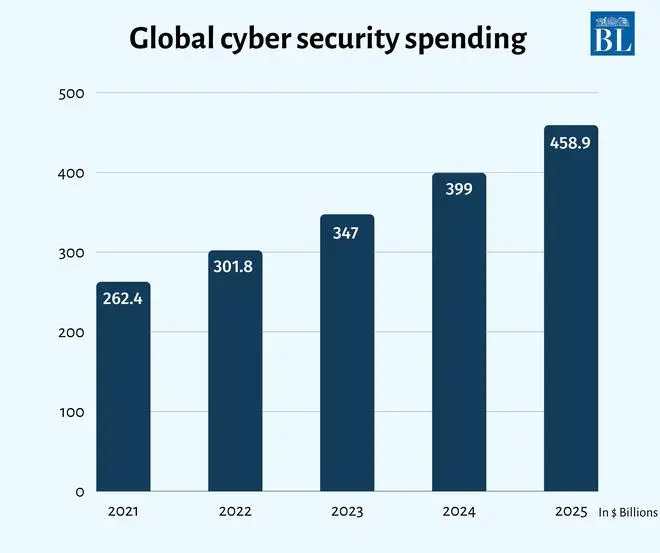Global cyber security spending has been growing at an average of 15 per cent in the last few years and the annual spending is projected to reach nearly $460 billion by 2025, taking the cumulative spending in five years from 2021 to a staggering $1.5 trillion (1 trillion ~ 1 lakh crore).
According to Kaspersky, a global cybersecurity and digital privacy company, cyber security spending in 2021 was pegged at $262.4 billion, while it is projected to cross the $300-billion mark in the current year.
“It is projected that cybersecurity spending globally is set to balloon to $460 billion in the coming years, almost double the 2021 cumulative expenditures and almost as big as the current total GDP (gross domestic product) of Thailand, for example,” said Vitaly Kamluk, Director of the Global Research & Analysis Team (GReAT) for Asia Pacific (APAC) at Kaspersky.
Speaking at Kaspersky’s annual Cybersecurity Weekend in the city, Kamluk further said that the current landscape can take this projection up a few notches.

Giving details on risks in the current cyber defense environment, Kamluk said that Kaspersky has detected and blocked over 7.2 billion attacks by malicious objects, including malware and malicious web content worldwide, between July 2021 and August 2022.
Notably, one in every three (nearly 35 per cent) malicious objects detected by Kaspersky globally were targeting users from the APAC region, with India, Japan, Vietnam, China, and Indonesia being the top five countries in terms of infection.
The data on malicious objects has been gathered from its clients that include businesses, critical infrastructure providers, governments and consumers around the globe. The company claims that it serves over 400 million users globally, including 2,40,00 corporate clients.
India’s position
According to Kaspersky, India not only leads in terms of absolute number of malicious objects detected in the APAC region, but has also witnessed a growing number of detections in the last two years.
The data compiled by Kaspersky from its clients show the growing vulnerability of the APAC region, with the absolute number of detections reaching 35 per cent of the total detections worldwide between August 2021 and July 2022, against 20 per cent detected in the region during the same period in the previous year.
Within APAC, India topped the list with three per cent (nearly 340 million) of global detections, alongside Vietnam and Japan between August 2020 and July 2021, while the number of detections doubled to six per cent (nearly 250 million) between August 2021 and July 2022.
Threats emanating from Pakistan, China
On threats to India’s cyber space, Saurabh Sharma, Senior Security Researcher of GreAT for APAC at Kaspersky, said targeted attacks primarily originate in China and Pakistan, especially during border tensions and other major events of political or military significance.
“During the border clash with China in the Ladkah region we could see some activity (targeted attacks)….with Pakistan, too, we see a similar trend during border tensions,” said Saurabh who tracks targeted attacks on the company’s customers in India.
“Targeted attacks are conducted on organisations, especially those related to government or private companies handling critical infrastructure,” he added.
(The writer was in Phuket at the invitation of Kaspersky)







Comments
Comments have to be in English, and in full sentences. They cannot be abusive or personal. Please abide by our community guidelines for posting your comments.
We have migrated to a new commenting platform. If you are already a registered user of TheHindu Businessline and logged in, you may continue to engage with our articles. If you do not have an account please register and login to post comments. Users can access their older comments by logging into their accounts on Vuukle.